
The 101st Airborne Division (Air Assault) ("Screaming Eagles") is a light infantry division of the United States Army that specializes in air assault operations. It can plan, coordinate, and execute multiple battalion-size air assault operations to seize terrain. These operations can be conducted by mobile teams covering large distances, fighting behind enemy lines, and working in austere environments with limited or degraded infrastructure. Its unique battlefield mobility and high level of training have kept it in the vanguard of U.S. land combat forces in recent conflicts: for example, foreign internal defense and counterterrorism operations in Iraq, in Afghanistan in 2015–2016, and in Syria, as part of Operation Inherent Resolve in 2018–2021.
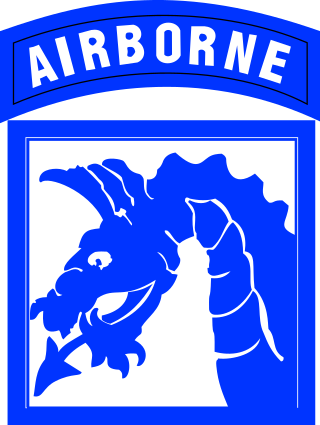
The XVIII Airborne Corps is a corps of the United States Army that has been in existence since 1942 and saw extensive service during World War II. The corps is designed for rapid deployment anywhere in the world and is referred to as "America's Contingency Corps." Its headquarters are at Fort Liberty, North Carolina.

The 1st Infantry Division (1ID) is a combined arms division of the United States Army, and is the oldest continuously serving division in the Regular Army. It has seen continuous service since its organization in 1917 during World War I. It was officially nicknamed "The Big Red One" after its shoulder patch and is also nicknamed "The Fighting First." The division has also received troop monikers of "The Big Dead One" and "The Bloody First" as puns on the respective officially sanctioned nicknames. It is currently based at Fort Riley, Kansas.
Fort Campbell is a United States Army installation located astride the Kentucky–Tennessee border between Hopkinsville, Kentucky and Clarksville, Tennessee. Fort Campbell is home to the 101st Airborne Division and the 160th Special Operations Aviation Regiment. The fort is named in honor of Union Army Brigadier General William Bowen Campbell, the last Whig Governor of Tennessee.

The 506th Infantry Regiment, originally designated the 506th Parachute Infantry Regiment during World War II, is an airborne light infantry regiment of the United States Army. Currently a parent regiment under the U.S. Army Regimental System, the regiment has two active battalions: the 1st Battalion, 506th Infantry Regiment is assigned to the 1st Brigade Combat Team, 101st Airborne Division, and the 2nd Battalion, 506th Infantry Regiment is assigned to the 3rd Brigade Combat Team, 101st Airborne Division.

The 187th Airborne Infantry Regiment (Rakkasans) is a regiment of the 101st Airborne Division.

The 502nd Infantry Regiment, previously titled the 502nd Parachute Infantry Regiment, is an infantry regiment of the United States Army. The regiment was established shortly after U.S. entry into World War II, and was assigned as a regiment of the 101st Airborne Division, "The Screaming Eagles", one of the most decorated formations of the U.S. Army. The regiment saw substantial action in the European Theater of World War II and was inactivated in 1945, shortly after the end of the war. Reactivating in a new form in 1956, the 502nd Infantry has served in the Vietnam War, the Persian Gulf War, Iraq War, War in Afghanistan, and Operation Inherent Resolve in Iraq. Since 1974, the regiment has been classified as an Air Assault unit. Currently, its 1st and 2nd battalions are active. Both battalions are assigned to the 2nd Brigade Combat Team, 101st Airborne Division.
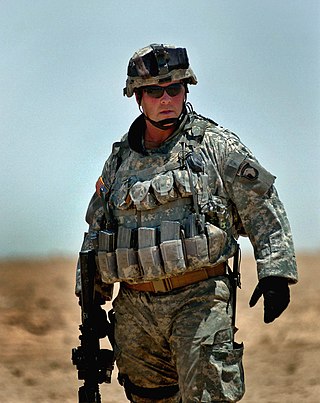
Michael Dane Steele is a retired colonel of the United States Army. He was a company commander in the 3rd Battalion, 75th Ranger Regiment during the Battle of Mogadishu (1993) in Somalia during Operation Gothic Serpent, which resulted in the now famous book and film Black Hawk Down, wherein he was portrayed by actor Jason Isaacs. He briefly appears in the documentary I Am an American Soldier.

The 325th Infantry Regiment is an infantry regiment of the 82nd Airborne Division. The regiment serves as the 82nd Airborne's light infantry parachute insertion fighting force of the United States Army, with a long and distinguished history, having taken part in World War I, World War II, the Vietnam War, the invasions of Grenada and Panama, as well as the Gulf and Iraq Wars. The subordinate units of the regiment constitute the bulk of the infantry elements assigned to the 2nd Infantry Brigade Combat Team, 82nd Airborne Division.

The 1st Battalion, 320th Field Artillery Regiment is the field artillery battalion assigned to the 2nd Brigade Combat Team, 101st Airborne Division. The battalion has been assigned to the 82nd Airborne Division, 11th Airborne Division and 101st Airborne Division. The battalion has participated in World War I, World War II, Operation Power Pack, Operation Urgent Fury, Operation Desert Storm, Operation Iraqi Freedom, Operation Enduring Freedom, and Operation Inherent Resolve.

The 501st Infantry Regiment, previously the 501st Parachute Infantry Regiment and 501st Airborne Infantry Regiment, is an airborne forces regiment of the United States Army with a long history, having served in World War II and the Vietnam War, both as part of the 101st Airborne Division, as well as the War in Afghanistan. It is the first airborne unit by designation in the United States Armed Forces. Its 1st Battalion is assigned to the 2nd Infantry Brigade Combat Team (Airborne), 11th Airborne Division, located at Fort Richardson, Alaska. Its 2nd Battalion is assigned to the 1st Brigade Combat Team, 82nd Airborne Division, located at Fort Liberty, North Carolina.

Majid al Tamimi Airbase, officially known as the Tikrit Air Academy and formerly as Al Sahra Airfield is an air installation near Tikrit in northern Iraq. The installation is approximately 170 kilometers north of Baghdad and 11 kilometers west of the Tigris River. Prior to 2003, Al Sahra Airfield was the main base of the Iraqi Air Force Air Academy. The Marines from Task Force Tripoli captured the base from the Iraqi Army during the 2003 U.S. invasion of Iraq and turned it over the United States Army who used it as the headquarters of the United States Division–North. The airfield is served by two main runways measuring 9,600 feet (2,900 m) long with a shorter runway measuring 7,200-foot (2,200 m). The Americans named the airfield after Captain Michael Scott Speicher, a United States Navy pilot who was killed in action in Iraq during the 1991 Gulf War.
The Special Troops Battalion, 3rd Brigade Combat Team, 101st Airborne Division, Fort Campbell, Kentucky, was a multi-functional battalion created on 16 September 2004 as part of the U.S. Army's brigade realignment plan to transform brigades into units of action (UA). It brought together a combat engineer company from the 326th Engineer Battalion (Combat) (Airborne) and signal and military intelligence companies formerly affiliated with inactivated battalions in the 101st Airborne Division. Although one former member of the battalion recalled that the Rakkasans were "almost like a cult in every sense," the battalion itself was largely an administrative entity rather than a cohesive operational unit. With disparate roles, its component units operated separately outside of garrison, supporting maneuver battalions or the brigade itself during training and deployments.
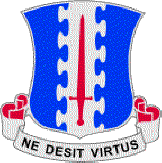
The 3rd Battalion, 187th Infantry Regiment, also known as the Iron Rakkasans, is a battalion of the US Army 187th Infantry Regiment. The battalion was activated on 25 February 1943 and first saw action in the Pacific Theater of the Second World War, during the battle to regain US control of the Philippines. Troops from the battalion then served in the four-year occupation of Japan, where they earned their nickname "Rakkasans", before stationing in Fort Campbell, Kentucky. The battalion served in the Korean War from 1950 as the 187th Airborne Regimental Combat Team and participated in 12 major missions during the Vietnam War, emerging from that conflict as the US's most highly decorated airborne battalion. In 1992 they were designated as the "Ir" Rakkasans by Lieutenant Colonel David Petraeus due to his Leader Rakkasan physical fitness test that added a fourth element of pull-ups to the standard APFT. The battalion has received numerous awards and commendations, including six Presidential Unit Citations and four Valorous Unit Awards.
The 2008 Nineveh campaign was a series of offensives and counter-attacks between insurgent and Coalition forces for control of the Nineveh Governorate in northern Iraq in early-to-mid-2008. Some fighting also occurred in the neighboring Kirkuk Governorate.

The 173rd Airborne Brigade is an airborne infantry brigade combat team (IBCT) of the United States Army based in Vicenza, Italy. It is the United States European Command's conventional airborne strategic response force for Europe.
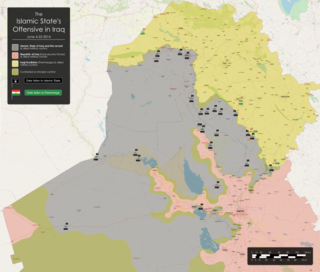
The Northern Iraq offensive began on 4 June 2014, when the Islamic State of Iraq and Levant, assisted by various insurgent groups in the region, began a major offensive from its territory in Syria into Iraq against Iraqi and Kurdish forces, following earlier clashes that had begun in December 2013 involving guerillas.
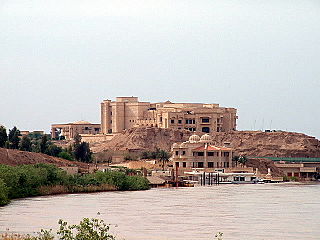
The First Battle of Tikrit was a battle for the Iraqi city of Tikrit following the city's capture by the Islamic State and Ba'athist Loyalists during the 2014 Northern Iraq offensive. The battle took place between 26 and 30 June 2014.
The 101st Airborne Division is a specialized modular light infantry division of the US Army trained for air assault operations. The Screaming Eagles has been referred to by journalists as "the tip of the spear" as well as one of the most potent and tactically mobile of the U.S. Army's divisions. The 101st Airborne Division has a history that is nearly a century long. During World War II, it was renowned for its role in Operation Overlord, Operation Market Garden, the liberation of the Netherlands and its action during the Battle of the Bulge around the city of Bastogne, Belgium. During the Vietnam War, the 101st Airborne Division fought in several major campaigns and battles, including the Battle of Hamburger Hill in May 1969. In mid-1968, it was reorganized and redesignated as an airmobile division and then in 1974 as an air assault division. In recent years, the division has served in Iraq and Afghanistan. At the height of the War on Terror, the 101st Airborne Division had over 200 aircraft. The division now has slightly over 100 aircraft.

Uday and Qusay Hussein, sons of deposed Iraqi President Saddam Hussein, were killed during an American military operation conducted on July 22, 2003, in the city of Mosul, Iraq. The operation originally intended to apprehend them, but turned into a four-hour gun battle outside a fortified safehouse which ended with the death of the brothers, Qusay's son Mustafa, and a bodyguard, Abdul Samad al-Hadushi.















